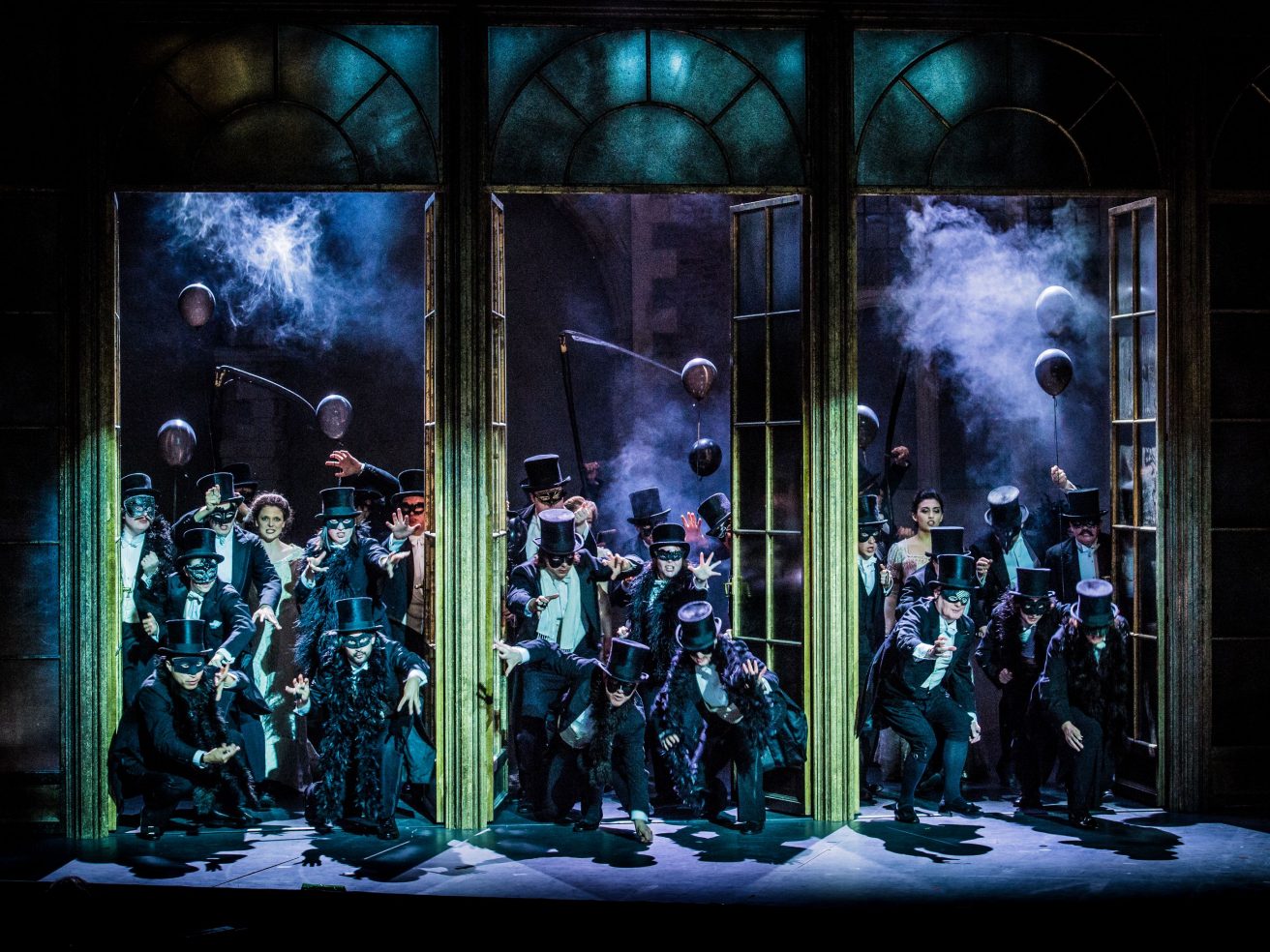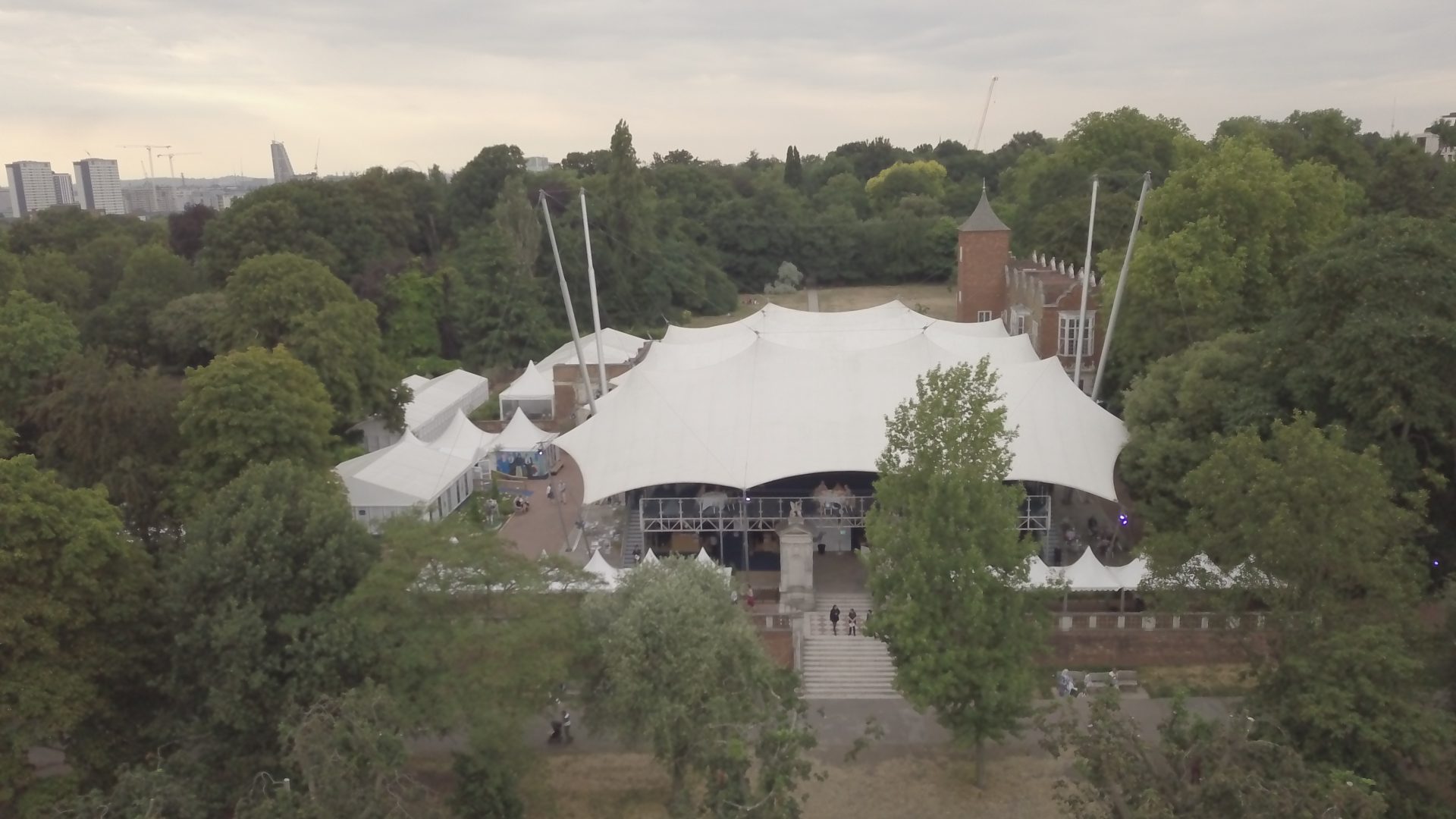We worked together for forty years on over forty-five productions both in this country and abroad. His career spanned a period of nearly seventy years with over five hundred productions to his credit. He worked with and designed for a veritable Who’s Who of the British Theatre. He designed for every branch of the live theatre: opera and ballet at Covent Garden, operas at Glyndebourne, Sadler’s Wells and ENO, straight plays and Reviews in the West End as well as extensive work for the Chichester Festival Theatre.
So in 1996 when Opera Holland Park launched its inaugural production of Un ballo in maschera directed by his long-time collaborator Anthony Besch, Peter’s vast experience ensured a visual success. The following season he designed two productions, Eugene Onegin and Besch and the sets for Iris with me. Usually Peter designed both sets and costumes but for Iris the company turned to the outstanding fashion designers, Charles and Patricia Lester for the costumes. The simplicity of Peter’s Japanese bridge that worked for all three acts, fishing village, brothel, and sewer, perfectly complimented the visual opulence of the Lester’s costumes.
Over the next twelve years Peter designed all fourteen of my productions for the company and worked with eight other directors on a further ten operas, including Annilese Miskimmon, Jamie Hayes and Martin Lloyd-Evans. Most years he designed at least two productions a season. He was master of resourceful inventiveness. When money was tight (when in the theatre is it anything but?), he found ways to reuse an existing set by presenting it in a different guise. So his original French grey latticed set for The Marriage of Figaro in 1999 became a sunny southern Italian yellow and white set the following year for Cosi fan tutte. This turned into a very dramatic black and gold World War II Parisian setting for La traviata and finally, before it fell to pieces, was split up and metamorphosed into both Adriana Lecouvreur and La rondine in 2002. And the extraordinary thing was that audiences did not recognise that they had seen the basic set before and complimented Peter on his original designs.
His busiest season was in 2005 when he designed a traditional and beautiful Madama Butterfly; a very Italian ‘The Last Picture Show’ inspired L’elisir d’amore; a bleached wood Eugene Onegin and a colourful revolutionary Andrea Chenier.
The three operettas we did together updated the periods successfully to the 1920s for Die Fledermaus, the 1930’s for The Merry Widow and Hollywood of the 1940’s for Orpheus in the Underworld.
If a management engaged Peter Rice they knew they would get a visually beautiful set that worked technically with any complex scenic problems solved in advance. His aim with costumes was always to enhance the performer, giving them clothes that were comfortable to work in that at the same time were appropriate to the period and looked good. He was not afraid, in conjunction with his director, of changing periods and locations, but he always remained true to the author or composer’s intentions.
It is very easy to design for the major companies where bigger budgets can faithfully create exactly what the designer has in mind, but it is a very different matter to make a small budget look a million dollars. Peter, when working for Opera Holland Park, could do this. He had the ability to take individual garments from stock costumes – a skirt here, a top there and by adding a drape, a bit of lace or a hat, turn it into an original ‘Rice’ design. Working closely with Angels the theatrical costumiers, the bulk of the show would be dressed, leaving enough money to have the really important costumes made. He would achieve this without going over budget.
Peter could turn his hand to anything from scene painting (indeed he cajoled his future wife, Pat Albeck, into painting a set with him, and promptly proposed to her) to stitching costumes or creating beautiful props. I fondly remember the Elephant he made for Lakmé.
In the Park, the area left of the stage (which is used for picnics) became Peter’s ‘office’, where he transformed the mundane into something exceptional.
His final production for the company was the 2011 presentation of Puccini’s La rondine for which he designed a stunning Art Nouveau setting. Working with Peter was always a life enriching pleasure. He would take my often, rather vague ideas, analyse them, and come up with various choices for the look of the production.
Pictures and cuttings would arrive by every post and delightful discussions, often while exercising his beloved dogs, would take place and in this way we would achieve a visual look for the opera. Beautiful drawings and watercolours of sets, costumes and props would be produced, and they have become collectors’ items eagerly sought after by theatrical enthusiasts.
But in the end the theatrical profession is ephemeral and for most of us, all that we are left with are memories. In Peter’s case, we who were fortunate to work with him, the memories are joyous.
Originally printed as part of Opera Holland Park’s 2016 Season Programme Magazine


